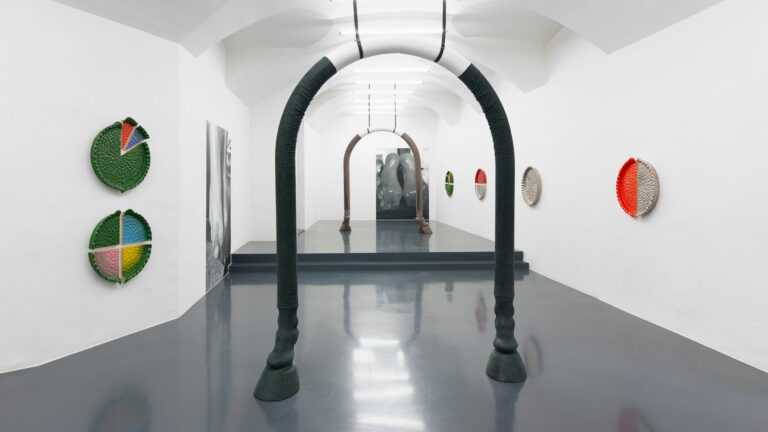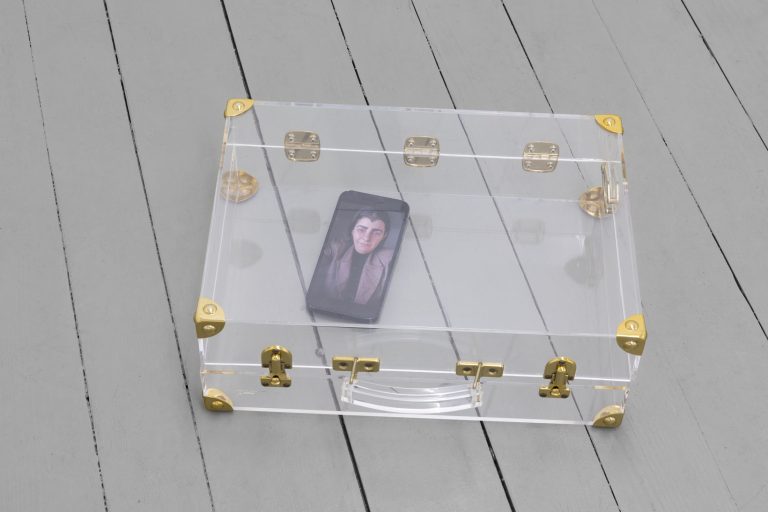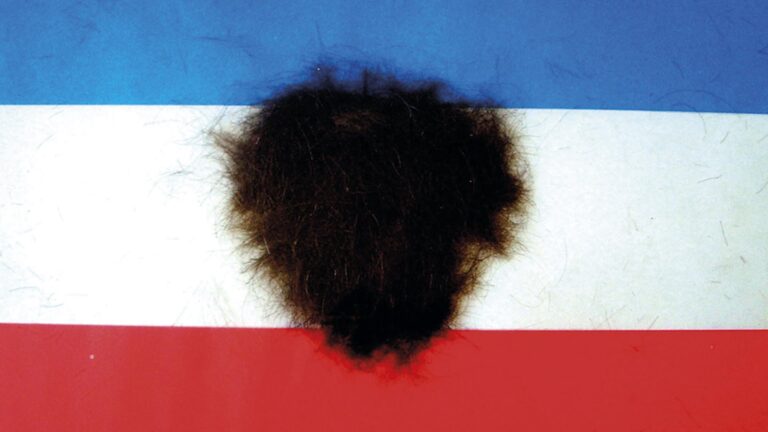Artist: Joanna Woś
Exhibition title: Glittering Prize
Venue: Croy Nielsen, Vienna, Austria
Date: June 21 – July 20, 2023
Photography: Kunst-Dokumentation.com / all images copyright and courtesy of the artist and Croy Nielsen
While Joanna was working on this show, I found out the most prominent version of the Holy Lance relic–or the Lance of Longinus as it is also called–sits in Vienna. Materially speaking it is a medieval lance adorned with gold and silver but its value as a relic was legendary. Throughout time, emperors and other rulers have competed in possessing the most flashy and famous relics, trophies of the suffering of Christ, using them to back their divine right to rule over others.
Longinus is the name later given to the Roman soldier who wounded Christ in his side and was covered with the blood from his heart (talk about an intense experience!) and in some versions of the legend, he is said to have subsequently proclaimed that Jesus was the son of god. Therefore he is recognized as one of the first Christians and a saint in several Christian communions.
But he wasn’t originally considered a saint, and earlier writings tell of the prize he had to pay for his misdeeds. He was trapped in a cave where a lion would enter every night and maul him until dawn. During the day his body would heal but as night came, the lion would return again, forming a cycle of suffering and recovery that would repeat until the end of time.
Evidently the different attitudes toward Longinus’ actions on that crucial day are hard to resolve. Condemned to eternal suffering or praised as an exceptional individual? And for what exactly? As a meager soldier, didn’t he just follow orders or were his actions really a result of divine intervention? Or maybe he just felt a perverse itch to see what was inside this extraordinary man, and that itch became his ever-lasting quality.
Certainly, no matter if he wanted it or not, it landed him a role in what is known as the greatest tale of all time. Fantasies of suffering and ecstasy, unconditional love and eter-nal life have always had a strong pull on most of us. Something that Joanna wasn’t late to recognize. In her paintings, she uses images that represent such fantasies, but through conflation, entanglements, and interpenetrations, she twists them into a hall of mirrors and invites us to go inside.
– Albert Løje




























